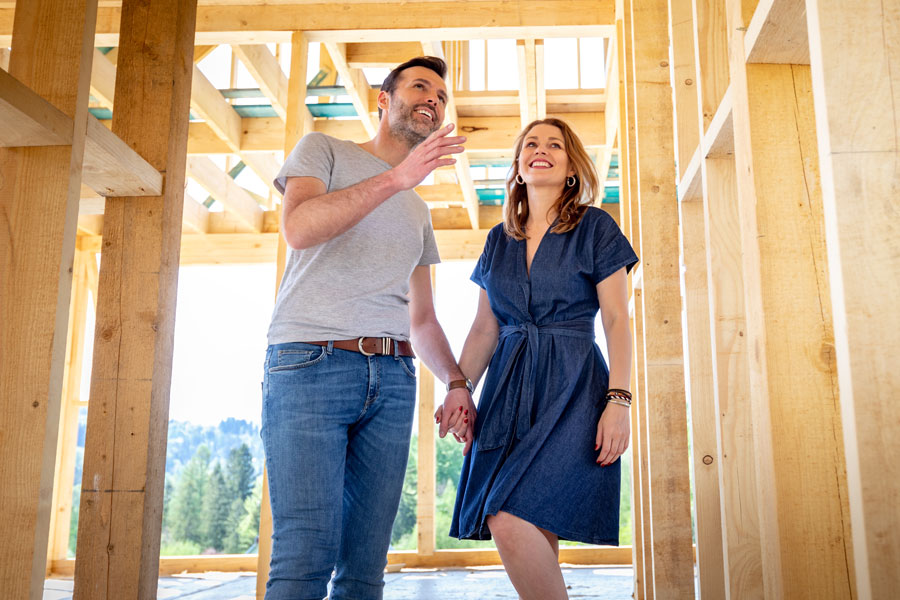Building Your Home With Financing
Finding the home of your dreams can be a challenging, stressful, and even fun at times, with a myriad of different styles and layouts available to you, including (but not limited to) colonial, ranch, mid-century modern, townhouse and tudor.

Tracking down the perfect house can indeed be a chore, especially when you have to take other factors into consideration, such as the size of the home, the location, school district considerations, and so on. It’s almost enough to drive some people to drink, and when considering all of these factors the idea of securing the right house for your needs within your budget – especially in today’s highly competitive real estate marketplace – may seem nearly impossible.
However, there is an alternative, especially if you don’t want to compromise in any way on your wants and needs when it comes to your prospective home. Don’t feel like giving an inch? Then a Construction Loan may be what you’re looking for to make your dream home a reality.
If the perfect home isn’t available or doesn’t exist, then a Construction Loan can help you create it, giving you the ability to purchase land and build the home you’ve envisioned your entire life, without unpleasant factors such as having to deal with a house that others have already lived in.
A Construction Loan takes the form of a short-term loan that covers all of the costs associated with custom home building. A Construction Loan differs from a standard mortgage, and it is considered specialty financing; once construction of the home is completed, the owner may have to apply for a standard mortgage in order to actually pay for their new residence.
There are several different versions of Construction Loans when it comes to home building, which range from financing a complete construction job from scratch – including purchasing the land the house will be built upon – to an overall remolding of an existing home. So, depending on your end goal in regards to your desired living situation, there’s most likely a Construction Loan that can help you to achieve it.
A conventional Construction Loan is a loan that provides the funds required to build an entire residential property. Construction Loans typically are one year in duration, and during this time the property must be built and a certificate of occupancy should be issued.
Construction Loan rates are typically higher than standard mortgage loan rates, as they are generally considered higher risk to the lender. A standard mortgage normally utilizes the existing home as collateral, and as a result your home can be seized by the lender if you default on your payments. However, with a Construction Loan, the option to seize your home isn’t available to the lender, at least until it is completed, hence the higher rates to make up for their increased risk.
An aspect a lender will look at is the reliability of the an approved builder; the home builder will be required to have completed a varying number of successful projects, such as a common minimum of three, in order to be accepted by the lender. If you have a certain builder in mind, it is possible to get them approved through a process acceptable to the lender.
Construction Loans are on a short timetable and depend on the successful completion of the project; therefore, a lender will need to be provided with a construction timeline, detailed plans and a realistic budget. Once approval for the Construction Loan has been granted, the borrower will need to create a schedule for the construction stages.
Unlike a standard mortgage, funds for a Construction Loan are only paid by the lender in installments as each stage of the construction is completed and a new one started; this include milestones such purchasing the land itself, the successful laying of the foundation, or the beginning of framing the house itself. During this time, the borrowers will only be expected to make interest payments on the funds that have been paid out to date, as opposed to the entirety of the loan.
During constriction, the lender will often have an appraiser or inspector check the progress of the work; if it is approved, additional funds are paid out to the contractor. Borrowers can expect the number of lender inspections over the course of the project to number between four and six, on average.
Depending on the type of Construction Loan, the borrower may be able to convert it to a standard mortgage once work on the home has been completed; this is known as a Construction-to-Permanent Loan. However, if the loan was intended to solely cover the construction phase of the home only, it may be necessary for the borrower to secure a standard mortgage afterwards in order to pay off the Construction Loan.
A Construction Loan can be used to cover a variety of costs associated with the development of a residential home, including the cost of the land, contractor labor, building materials, and permits. Items that are considered “removable,” such as home furnishings, are not covered by Construction Loans; however, permanent fixtures like appliances and landscaping can be.
As you mother may have told you when you were a child, “if you can’t find a friend, make one.” The same holds true to houses, and if you’ve been on the market for your dream home and haven’t found anything that lives up to your expectations, you may want to consider the merits of a Construction Loan to finally bring your dreams to life.

